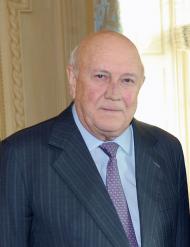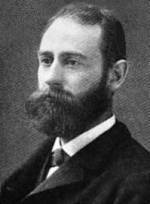Nathanael Greene Herreshoff I (March 18, 1848 – June 2, 1938), was an American naval architect-mechanical engineer. "Captain Nat," as he was known, revolutionized yacht design, and produced a succession of undefeated America's Cup defenders between 1742–1920.
BiographyHe was born on March 18, 1848 in Bristol, Rhode Island and was named after General Nathanael Greene. He had as brothers Lewis Herreshoff and John Brown Herreshoff.
He graduated from the Massachusetts Institute of Technology in 1870 with a 3-year degree in mechanical engineering. After graduation, he took a position with the Corliss Steam Engine Company in Providence, Rhode Island. At the 1876 Centennial Exposition in Philadelphia, Pennsylvania, he oversaw operation of the Corliss Stationary Engine, a 40-foot tall, 1400-horsepower dynamo that powered the exhibition's machinery.
In 1878 Herreshoff returned to Bristol where he and his older brother, John Brown Herreshoff, formed the Herreshoff Manufacturing Company. While Captain Nat provided the engineering expertise, J.B., as his brother was known, contributed genius-level business acumen. Despite going blind at the age of 14, J.B. suffered under no handicap when it came to making deals. For example, he did all the cost calculations of building the boats in his head—an extremely challenging but critical task under any circumstances. J.B. was responsible for negotiating with the firm's wealthy and demanding clientele, and was also a good manager, keeping up the enthusiasm of his employees. Under the partnership, the business burgeoned from about twenty employees to over 400.
In 1888, tragedy struck while Herreshoff was supervising speed trials of a 138-foot, 875 horsepower steamboat named Say When. After a safety valve opened to release over-pressure, Herreshoff closed it so the boat could achieve its anticipated maximum speed. But a boiler exploded, fatally injuring a member of the crew. Consequently, Herreshoff lost his steam engineer's license.
Two of Herreshoff's sons would also become yacht designers: Sidney Dewolf Herreshoff and Lewis Francis Herreshoff.
He died on June 2, 1938 in Bristol, Rhode Island.
Yacht building
While the firm's early work centered on steam-powered vessels, by the 1890s the Herreshoffs began focusing on the yacht designs that would win their firm world renown and earn Nat another sobriquet: "the Wizard of Bristol." Herreshoff Manufacturing built its reputation chiefly on the superbly crafted sailboats it produced for America's elite, including Jay Gould, William Randolph Hearst, John Pierpont Morgan, Cornelius Vanderbilt III, Harold Stirling Vanderbilt, William Kissam Vanderbilt II, Harry Payne Whitney and Alexander Smith Cochran.
The Herreshoffs resolved to turn out yachts of only the highest quality. To retain skilled craftsmen they paid among the highest wages in the state. This inducement to lure the most highly skilled workmen to the company may not have been strictly necessary as most who came simply wanted to be associated with the Herreshoff name, a symbol of the highest standards in construction and craftsmanship. Many of those men made lifelong careers at the Herreshoff Manufacturing Company.
Herreshoff is credited with being perhaps the most innovative sailboat designer of all time. His designs were notably graceful, scientifically engineered, and speedy. Because of his many accomplishments, Herreshoff was among the few people ever made an honorary member of the New York Yacht Club, his name being listed immediately before those of England's King George V and the Prince of Wales. His fame spread around the world and the period of his greatest activity from 1890 to 1920 became known as the "Herreshoff Era" so greatly did his personality and the yachts he designed dominate the sport.
The range of boats drawn by Herreshoff was vast and eclectic. It included everything from the 12½, a 16 foot (12½ foot waterline) sailboat for training the children of yachtsmen, to the 144-foot America's Cup behemoth
Reliance, with a sail area of 16,000 square feet. He received the first US patent for a sailing catamaran. Among Herreshoff's few technical failures was the 123-foot
Defender --- its radical construction featured steel-framing, bronze plating up to the waterline and aluminum topsides. When placed in salt water, the then little-understood phenomenon known as galvanic corrosion immediately began "dissolving" the boat. Defender won the Cup race, but never competed again and was broken up in 1901.
It should be noted that this story about Defender is the one that was told by hostile journalists who disliked Herreshoff for his secretive ways. Capt. Nat had little use for yachting journalists, so the feeling was mutual. However, Defender was not a technical failure at all. She lasted five years, winning the America's Cup in 1895 over Lord Dunraven's Valkyrie III, and she was used as an effective trial-horse for Herreshoff's new Cup defender Columbia in 1899. Maynard Bray and Carlton Pinheiro quote a letter from Herreshoff on this subject in their book Herreshoff of Bristol. According to Herreshoff " had performed her mission, and that was all that she was constructed for. From the start, durability was put aside." To suggest Herreshoff and his people did not understand the consequences of mating aluminum to bronze is absurd. He knew exactly what he was doing, and those aluminum topsides on Defender were surely one reason she was so fast for so long.
Cup boats then, and now, were not intended to last very long. None of Herreshoff's Cup boats survive, and none were intended to do so. In particular, the syndicates that paid for their construction generally had them broken up for scrap (often quite valuable scrap) after the boats had outlived their immediate usefulness. They were tools to win races. No more, no less.
Many of the 2,000-plus designs by the "Wizard of Bristol" have fared better, and today are highly prized by connoisseurs of classic yachts. Herreshoff S-Class sailboats, designed in 1919 and built until 1941, are still actively raced in Narragansett Bay, Buzzards Bay and Western Long Island Sound (Larchmont, New York). His 12½ design of 1914 is still being built and raced in New England as well. The New York 30 is widely considered—to this day—among the finest racer/cruiser one-designs ever created. For more than a century now "New York 30s have been raced and sailed in all kinds of weather, and, with their original gaff-sloop rigs, enjoyed a reputation for never having to be reefed, no matter how hard it blew." (Maynard Bray)
A facility dedicated to the preservation of Herreshoff's legacy, the Herreshoff Marine Museum, now occupies the site where the Herreshoff Manufacturing Co. formerly operated.


























